Talk to a coarse fisherman and he’ll be the first to tell you that that most venues, rivers or lakes, have certain pegs that always produce a good bag of fish.
These “prime” pegs get a good reputation usually because they have some feature there that holds the fish. It could be inclines, weed beds, sunken gutters, snags or even a simple change in water depth or bottom feature.
Sea anglers in comparison pay little attention to features and often tend to choose a fishing station by how close they can get the car. In reality this is a big mistake that will cost a high percentage of catchable fish. Identifying features on beaches is key to becoming a good all round angler and this WSF feature aims to highlight the top ten fish holding features to give you a head start.
MAKING A START
The only way to fully understand the geography of a beach is to wait until one of the big equinoctial tides falling in March and April, and again in September and October.
This is when the tide goes out the furthest and exposes much more ground than would be normal. Ideally try and time it so that the tide you choose falls on a day when the barometric pressure is high and stable with no wind, or ideally with a wind off the shore to push the tide out to its maximum.
Take either a note pad or better still a digital camera and record all the features on the beach within typical casting range. Take sightings from permanent land marks above high water and record these so that you can find the individual features when the tide is fully in.
If you can, try and get some height above the beach as well, as this will pin point changes not always perceptible when looking from ground level.
So what exactly are you looking for?
1. PARALLEL GULLIES
Exactly as they sound. These are gutters or gullies, sometimes only a few feet wide, sometimes many yards across, that are deeper than the general beach and will always run pretty much parallel and in line with the beach.
These are created by lateral tide currents that sweep across the beach during the flood tide. The tide flow gets concentrated and scours out these gutters and gullies leaving shallower sandbanks in front and behind them.
Any food that gets washed inwards and is borne along by the tide current gets washed in to these gutters. Fish know this and as the tide floods each individual gully they move in to them to feed, leaving the shallower sand around the gutters almost empty of fish.
The gutters need only be 12-inches to a couple of feet deeper than the surrounding ground to create a fish holding feature.
These gutters tend to start off narrow, but then widen as the flow increases. Look to see if there are any deviations in the straightness of the gutter, and anywhere where the gutter narrows or angles off is again a natural food and fish holding area, so concentrate here.
These gutters and gullies typically hold, flounder, dabs, plaice, whiting, bass, codling, coalfish, and when positioned tight in to the top tide line, flounders and eels.
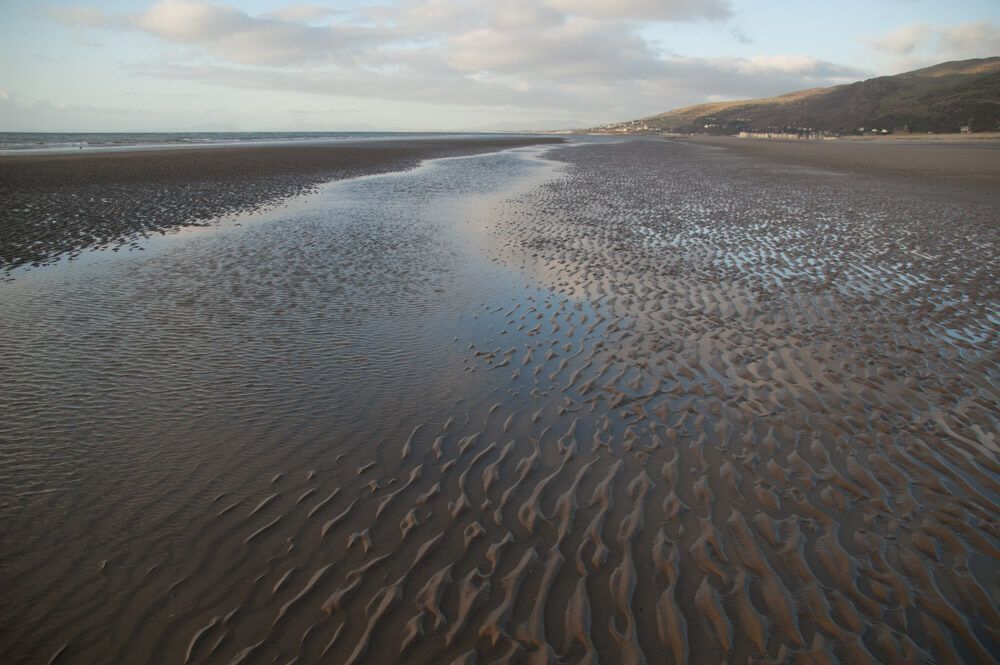
2. SANDBANKS
These can be especially good areas for picking up thornback and small-eyed ray. The rays tend not to sit in the bottoms of deeper gutters but prefer to lay on the inclines leading up from the gutter base towards the top of the shallower sandbanks.
You need to be precise in your knowledge of exactly where these banks are for the rays tend to be on the sea side inclines facing in to the current and not on the shore side. Rays are aware that its easy for them to get cut off and they tend to stay at distance on most beaches, though small-eyed are happy to move right in to the surf tables at low water, but remain further out towards high water and are quick to move out beyond the low tide line once the ebb tide starts.
Bigger plaice and turbot also sit on the inclines and will feed on sandeel which are often resident on the edges of sandbanks.
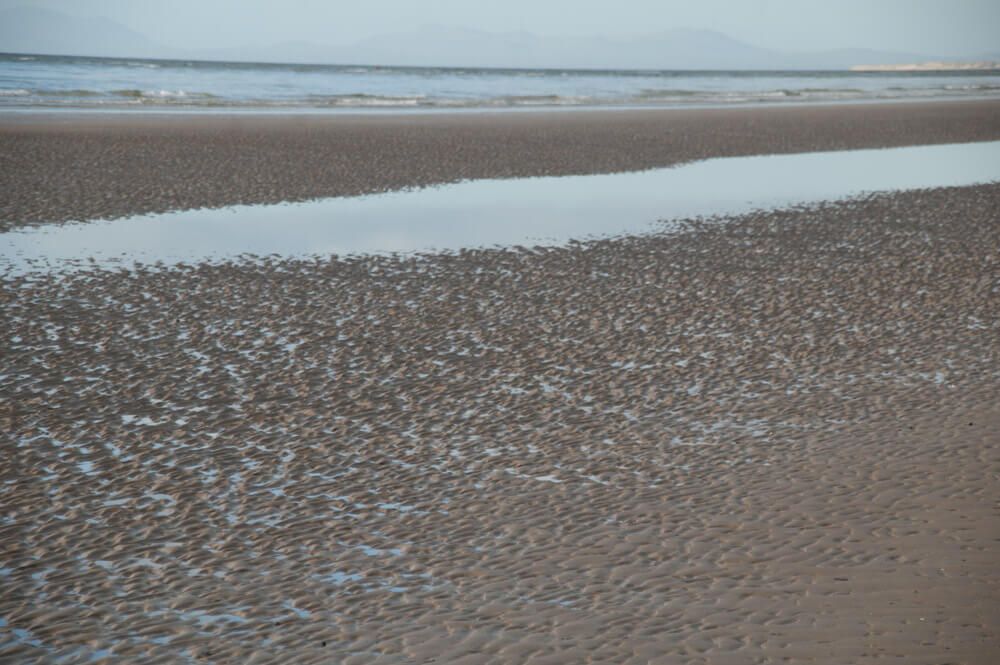
3. CHANNELS BETWEEN SANDBANKS
These are natural access routes for fishing moving in with the tide. Fish are not stupid and are reluctant to swim in shallow water over the top of the sandbanks, but where possible will use deeper gutters that run in towards the beach to maximise their feeding time.
These then are natural motorways for the fish and make the perfect ambush point for both bigger fish predators and also prove a prime spot for anglers to cast their bait to.
Often these little run-throughs are just a few feet wide with a sandbank dropping down to form the gutter, then a rising sandbank. Sometimes the run-through can be 30 to 40-yards wide, and though these are good fishing spots they do not produce as well as the narrow gutters that really concentrate the fish.
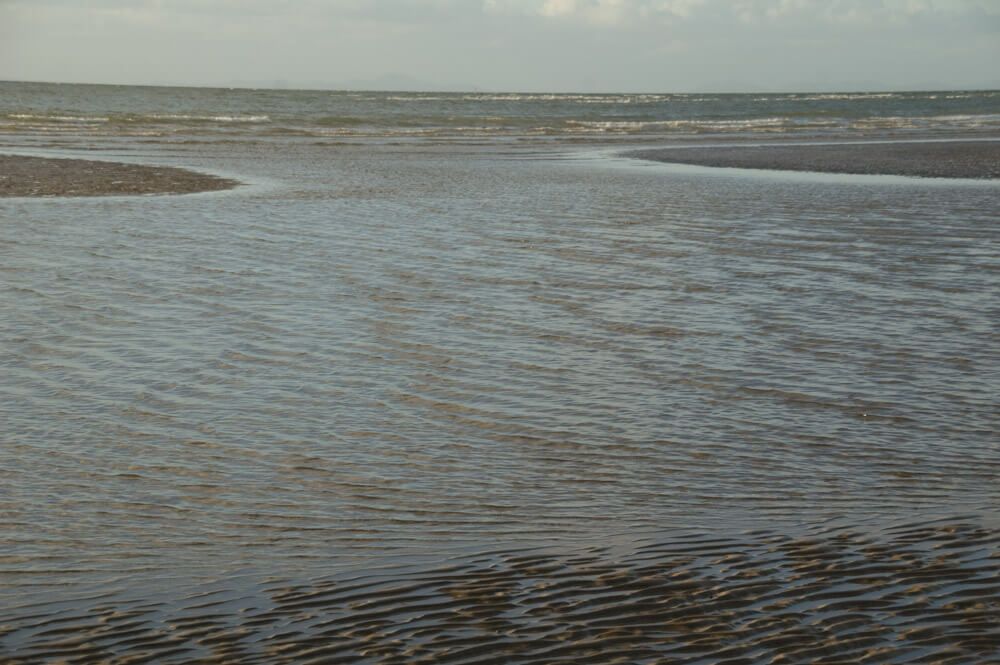
4. DEPRESSIONS
Much harder to identify, but these prove to be good fish holding feature.
If you look at the sand on a beach, where the surf washes it will be relatively smooth and of even format. Where the tide has some effect, be that caused by passing lateral current, or by small eddies in the tide, or by an undertow, the sand format is damp and stippled or formed up in to tiny shallow ridges that appear darker than higher dry sand. These areas will be deeper than any areas of even sand due to the scouring action.
Sometimes you need to physically get down on your knees to see these. But they are present on each and every beach if you look.
The ridges are natural food traps, plus being deeper areas, any food again borne along by the tide gets trapped here. Fish such as flounders, dabs, plaice, turbot, rays, even bass, codling and whiting will concentrate here.
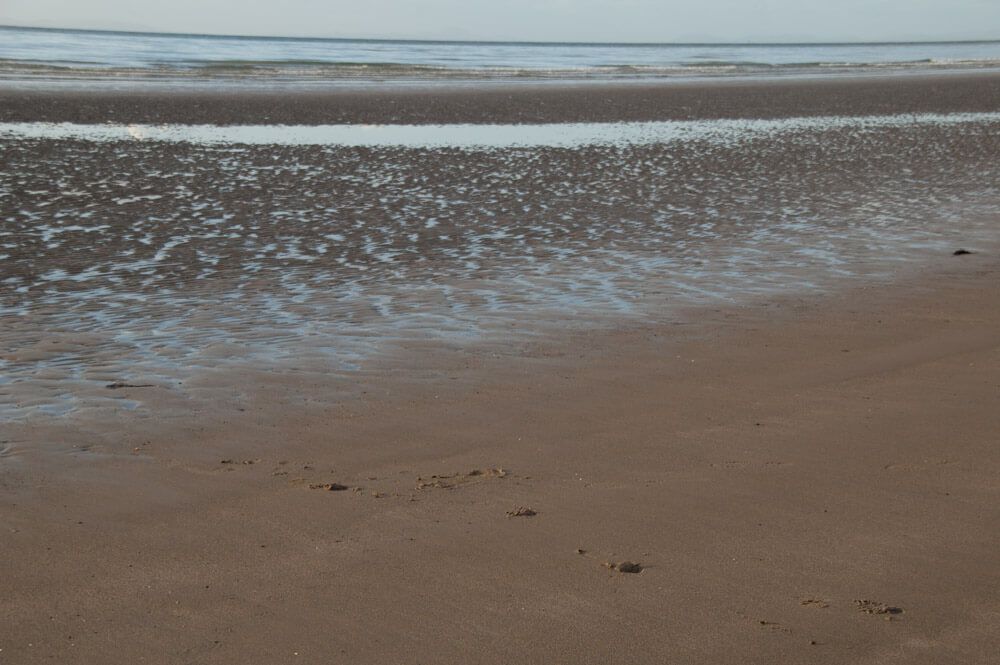
5. ROCK PATCHES
These are real hotpsots, especially if they occur only in small patches amongst otherwise totally clear sand. They are there because of light tidal action that strips away the sand to expose the boulders.
These little rough areas will hold crabs, small fish such as gobies, plus again any food washing up against their edges gets washed in to the rocks and holds there.
Fish such as bass and codling always make a bee-line for such feature.
You can deliberately cast in to the rough patch, but with these areas being relatively small, often just a few yards across, then putting bait tight to these areas will be enough to draw fish in to you.
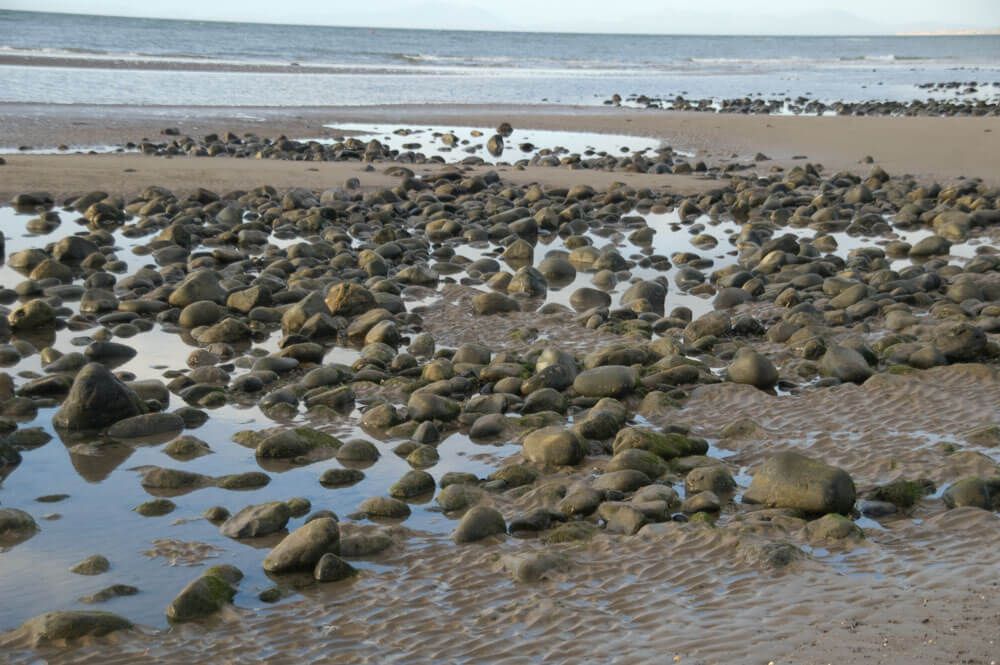
6. ROCK GUTTERS
These are again formed by lateral tide flow washing out the sand. These typically form as long wide areas of broken scattered boulders with a deep sandbank on the seaward side. These are one of the best features of all!
What you have here is multiple of advantages. The natural lateral tide action carries food down along the beach, but surf action on the seaward sandbank washes other food such as shellfish, sandeel and shrimp over the top of the sandbank and in to the rougher ground, plus you have the natural boulder dwellers there such as gobies, small mussels, crabs etc.
The fish tend to work in to the tide over these and will access these rough areas at the nearest deepest point, or wait until there is enough depth over the top of the sandbank for them to swim over it.
These bigger areas of rough ground are top spots for bass and codling.
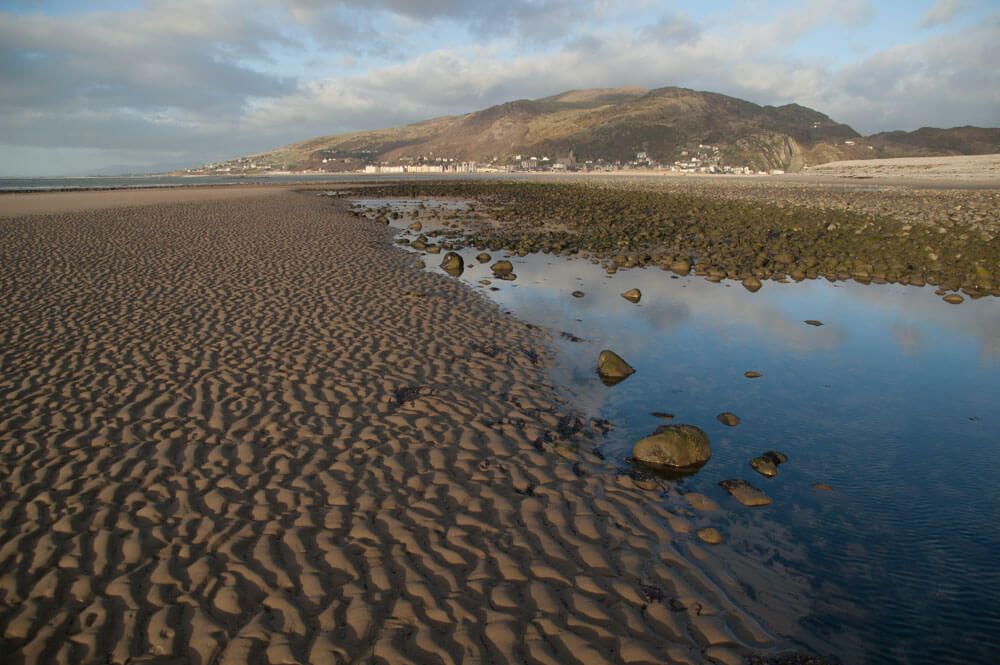
7. WEED BEDS
These tend to be found on deeper beaches and are not that common within normal casting range, but when found can be an excellent fish holding feature.
These are usually areas of rough ground situated along the crease of a tide line but just inside quieter water where weed gets a chance to grow. Its usually small areas of bladder wrack or eel grass.
These hold a wealth of food including shrimps, crabs, sandeels and small fish, mussels and other small shellfish.
Fish that favour such feature are black bream, bass, cod, rockling's, pout, with plaice sitting on the edges of them.
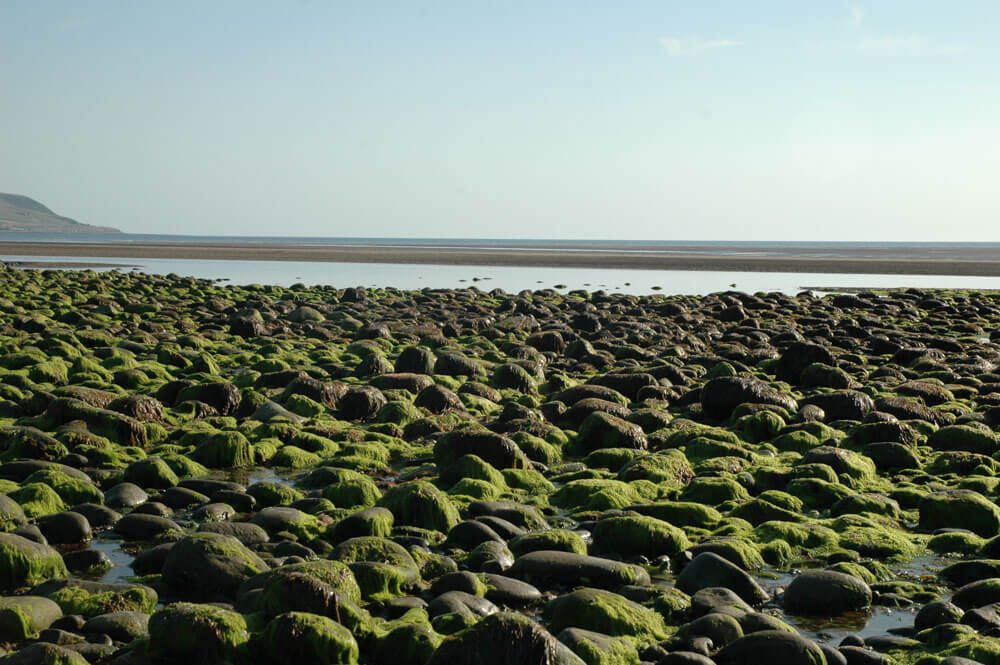
8. FRESHWATER STREAMS
These can be quite wide streams or just small freshlets of water crossing the beach.
These need to be fished with some thought. If they are running heavy with flood water, then always fish on the uptide side, never the downtide side. If the freshwater is acidic fish will avoid it. The tide pushes the acidic water in a downtide direction, with the fish to be found uptide in cleaner untainted water.
If the water is running clear, then as it mixes with saltwater as the tide floods in, flounders, eels and bass will always visit such areas. Food gets washed down from the stream itself, but also any laterally borne food that washes in to the streams flow will tumble back down the beach to be picked off by waiting fish.
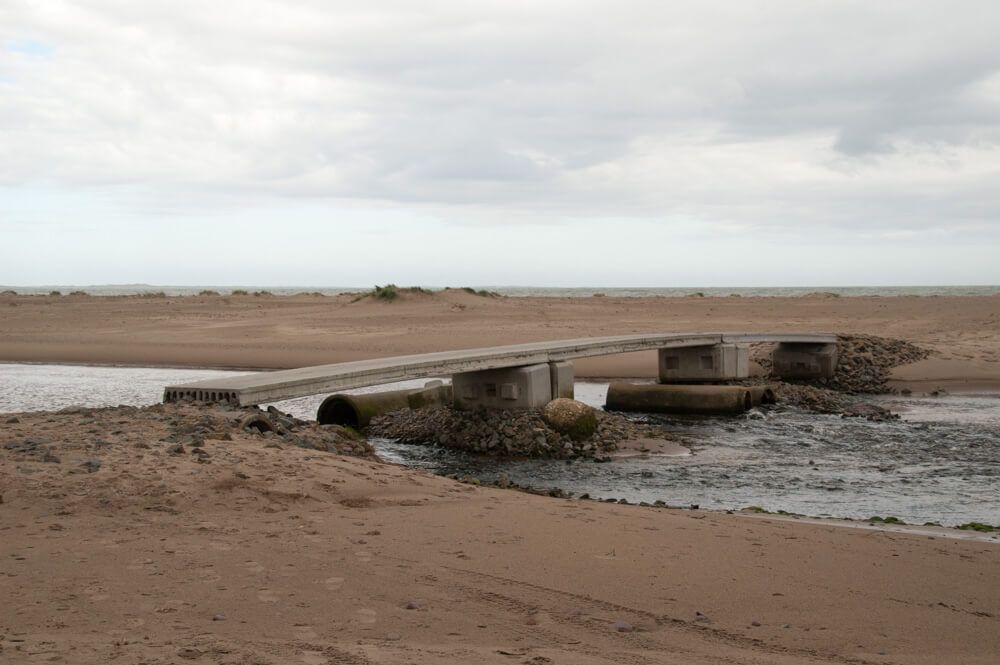
9. THE SAND/SHINGLE DIVIDE
This applies more to steep-to beaches than it does to shallow surf beaches, though some surf beaches have a deeper angle to the shingle that over high water allows fish to feed along the shingle/sand divide.
As the surf action rolls ashore it picks up the very top surface layer of sand. This exposes creatures such as sand hoppers, plus water borne food also gets washed inshore and then pulled out again by any undertow. The logical place for this food to get trapped is in the shingle line where the sand meets the shingle.
This particularly applies when fishing just after storms when lots of food is being washed inshore by the pounding surf.
Getting anglers to fish at such short range is difficult, but the fact is that these areas are exceptionally good for producing coalfish, flounder, eels and bass. If there is enough depth, say 6-feet or so, good sized turbot can also be found on this divide on our western coast beaches.
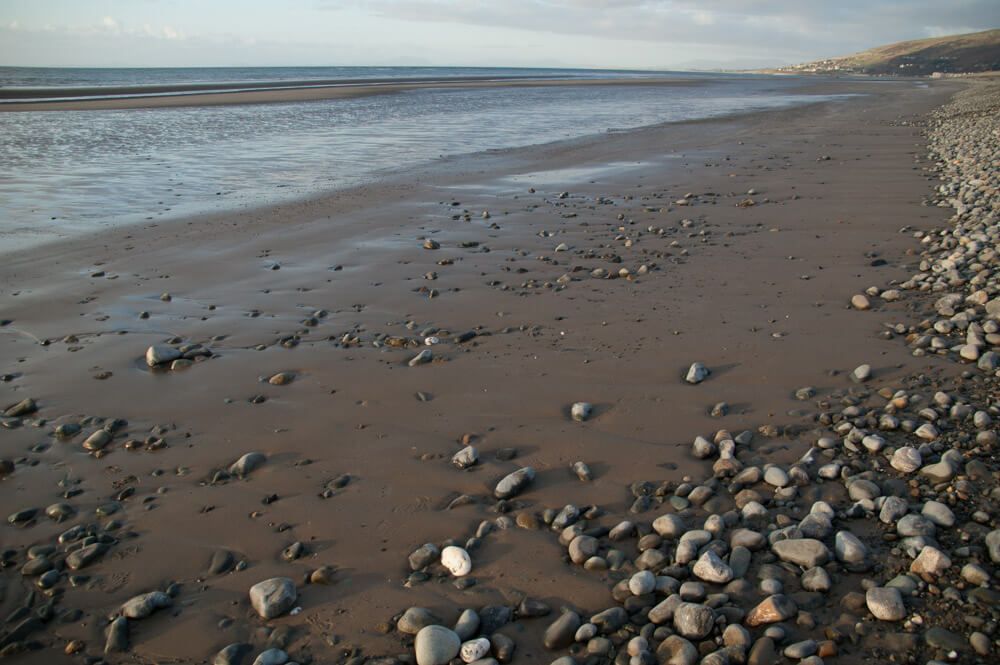
10. THE WASH-UP
These are areas along the beach where washed up debris such as sticks, logs, trees, plastic rubbish, in fact general Flotsam and Jepson congregates.
These rubbish collection points indicate an area where a tide run washes ashore. If this tide run can carry so much rubbish with it, then it certainly carries food and fishing this area will put you amongst the fish.
These are good places to fish when the tide is half way in right through to high water, and remember not to cast too far otherwise you’ll loose that collection effect and may well be fishing barren water.
Wash-ups can also be noted by a change in the configuration of the shingle itself. If you look at a shingle ridge it’s mostly of an even angle broken only by one or maybe two wide steps which denote where the surf has been breaking when the tide was a small neap, a middle sized tide, and a spring tide.
In wash-up areas the steps tend to be smaller and broken up because the tide flow changes strength as the tides change from neaps to springs. Look for small areas of broken up shingle steps and you’ve found your wash-up.
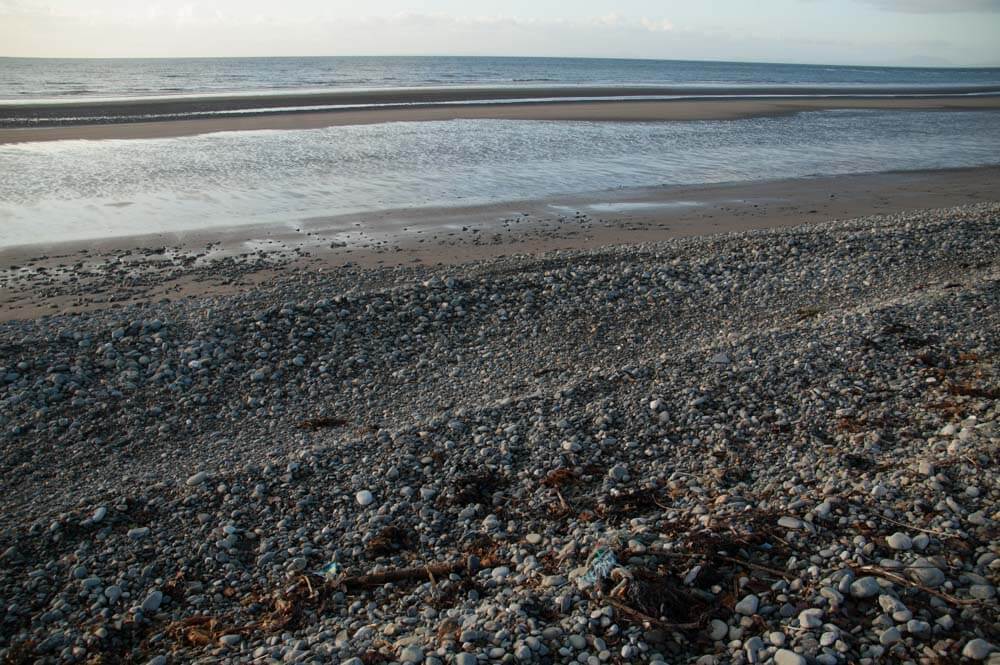
CONCLUSION
There you go, ten top features to look for on any surf beach. Look for these and fish tight to them, or in to them, and you will improve your catch rate over the guy who chucks and chances it!
Put a human in a survival situation and they’d look for fish in streams, rabbits in warrens and fruit on trees and bushes. It just the same for fish in their environment, they know where to look and that means going to the appropriate place not wasting time and energy swimming over barren ground.
These “prime” pegs get a good reputation usually because they have some feature there that holds the fish. It could be inclines, weed beds, sunken gutters, snags or even a simple change in water depth or bottom feature.
Sea anglers in comparison pay little attention to features and often tend to choose a fishing station by how close they can get the car. In reality this is a big mistake that will cost a high percentage of catchable fish. Identifying features on beaches is key to becoming a good all round angler and this WSF feature aims to highlight the top ten fish holding features to give you a head start.
MAKING A START
The only way to fully understand the geography of a beach is to wait until one of the big equinoctial tides falling in March and April, and again in September and October.
This is when the tide goes out the furthest and exposes much more ground than would be normal. Ideally try and time it so that the tide you choose falls on a day when the barometric pressure is high and stable with no wind, or ideally with a wind off the shore to push the tide out to its maximum.
Take either a note pad or better still a digital camera and record all the features on the beach within typical casting range. Take sightings from permanent land marks above high water and record these so that you can find the individual features when the tide is fully in.
If you can, try and get some height above the beach as well, as this will pin point changes not always perceptible when looking from ground level.
So what exactly are you looking for?
1. PARALLEL GULLIES
Exactly as they sound. These are gutters or gullies, sometimes only a few feet wide, sometimes many yards across, that are deeper than the general beach and will always run pretty much parallel and in line with the beach.
These are created by lateral tide currents that sweep across the beach during the flood tide. The tide flow gets concentrated and scours out these gutters and gullies leaving shallower sandbanks in front and behind them.
Any food that gets washed inwards and is borne along by the tide current gets washed in to these gutters. Fish know this and as the tide floods each individual gully they move in to them to feed, leaving the shallower sand around the gutters almost empty of fish.
The gutters need only be 12-inches to a couple of feet deeper than the surrounding ground to create a fish holding feature.
These gutters tend to start off narrow, but then widen as the flow increases. Look to see if there are any deviations in the straightness of the gutter, and anywhere where the gutter narrows or angles off is again a natural food and fish holding area, so concentrate here.
These gutters and gullies typically hold, flounder, dabs, plaice, whiting, bass, codling, coalfish, and when positioned tight in to the top tide line, flounders and eels.

2. SANDBANKS
These can be especially good areas for picking up thornback and small-eyed ray. The rays tend not to sit in the bottoms of deeper gutters but prefer to lay on the inclines leading up from the gutter base towards the top of the shallower sandbanks.
You need to be precise in your knowledge of exactly where these banks are for the rays tend to be on the sea side inclines facing in to the current and not on the shore side. Rays are aware that its easy for them to get cut off and they tend to stay at distance on most beaches, though small-eyed are happy to move right in to the surf tables at low water, but remain further out towards high water and are quick to move out beyond the low tide line once the ebb tide starts.
Bigger plaice and turbot also sit on the inclines and will feed on sandeel which are often resident on the edges of sandbanks.

3. CHANNELS BETWEEN SANDBANKS
These are natural access routes for fishing moving in with the tide. Fish are not stupid and are reluctant to swim in shallow water over the top of the sandbanks, but where possible will use deeper gutters that run in towards the beach to maximise their feeding time.
These then are natural motorways for the fish and make the perfect ambush point for both bigger fish predators and also prove a prime spot for anglers to cast their bait to.
Often these little run-throughs are just a few feet wide with a sandbank dropping down to form the gutter, then a rising sandbank. Sometimes the run-through can be 30 to 40-yards wide, and though these are good fishing spots they do not produce as well as the narrow gutters that really concentrate the fish.

4. DEPRESSIONS
Much harder to identify, but these prove to be good fish holding feature.
If you look at the sand on a beach, where the surf washes it will be relatively smooth and of even format. Where the tide has some effect, be that caused by passing lateral current, or by small eddies in the tide, or by an undertow, the sand format is damp and stippled or formed up in to tiny shallow ridges that appear darker than higher dry sand. These areas will be deeper than any areas of even sand due to the scouring action.
Sometimes you need to physically get down on your knees to see these. But they are present on each and every beach if you look.
The ridges are natural food traps, plus being deeper areas, any food again borne along by the tide gets trapped here. Fish such as flounders, dabs, plaice, turbot, rays, even bass, codling and whiting will concentrate here.

5. ROCK PATCHES
These are real hotpsots, especially if they occur only in small patches amongst otherwise totally clear sand. They are there because of light tidal action that strips away the sand to expose the boulders.
These little rough areas will hold crabs, small fish such as gobies, plus again any food washing up against their edges gets washed in to the rocks and holds there.
Fish such as bass and codling always make a bee-line for such feature.
You can deliberately cast in to the rough patch, but with these areas being relatively small, often just a few yards across, then putting bait tight to these areas will be enough to draw fish in to you.

6. ROCK GUTTERS
These are again formed by lateral tide flow washing out the sand. These typically form as long wide areas of broken scattered boulders with a deep sandbank on the seaward side. These are one of the best features of all!
What you have here is multiple of advantages. The natural lateral tide action carries food down along the beach, but surf action on the seaward sandbank washes other food such as shellfish, sandeel and shrimp over the top of the sandbank and in to the rougher ground, plus you have the natural boulder dwellers there such as gobies, small mussels, crabs etc.
The fish tend to work in to the tide over these and will access these rough areas at the nearest deepest point, or wait until there is enough depth over the top of the sandbank for them to swim over it.
These bigger areas of rough ground are top spots for bass and codling.

7. WEED BEDS
These tend to be found on deeper beaches and are not that common within normal casting range, but when found can be an excellent fish holding feature.
These are usually areas of rough ground situated along the crease of a tide line but just inside quieter water where weed gets a chance to grow. Its usually small areas of bladder wrack or eel grass.
These hold a wealth of food including shrimps, crabs, sandeels and small fish, mussels and other small shellfish.
Fish that favour such feature are black bream, bass, cod, rockling's, pout, with plaice sitting on the edges of them.

8. FRESHWATER STREAMS
These can be quite wide streams or just small freshlets of water crossing the beach.
These need to be fished with some thought. If they are running heavy with flood water, then always fish on the uptide side, never the downtide side. If the freshwater is acidic fish will avoid it. The tide pushes the acidic water in a downtide direction, with the fish to be found uptide in cleaner untainted water.
If the water is running clear, then as it mixes with saltwater as the tide floods in, flounders, eels and bass will always visit such areas. Food gets washed down from the stream itself, but also any laterally borne food that washes in to the streams flow will tumble back down the beach to be picked off by waiting fish.

9. THE SAND/SHINGLE DIVIDE
This applies more to steep-to beaches than it does to shallow surf beaches, though some surf beaches have a deeper angle to the shingle that over high water allows fish to feed along the shingle/sand divide.
As the surf action rolls ashore it picks up the very top surface layer of sand. This exposes creatures such as sand hoppers, plus water borne food also gets washed inshore and then pulled out again by any undertow. The logical place for this food to get trapped is in the shingle line where the sand meets the shingle.
This particularly applies when fishing just after storms when lots of food is being washed inshore by the pounding surf.
Getting anglers to fish at such short range is difficult, but the fact is that these areas are exceptionally good for producing coalfish, flounder, eels and bass. If there is enough depth, say 6-feet or so, good sized turbot can also be found on this divide on our western coast beaches.

10. THE WASH-UP
These are areas along the beach where washed up debris such as sticks, logs, trees, plastic rubbish, in fact general Flotsam and Jepson congregates.
These rubbish collection points indicate an area where a tide run washes ashore. If this tide run can carry so much rubbish with it, then it certainly carries food and fishing this area will put you amongst the fish.
These are good places to fish when the tide is half way in right through to high water, and remember not to cast too far otherwise you’ll loose that collection effect and may well be fishing barren water.
Wash-ups can also be noted by a change in the configuration of the shingle itself. If you look at a shingle ridge it’s mostly of an even angle broken only by one or maybe two wide steps which denote where the surf has been breaking when the tide was a small neap, a middle sized tide, and a spring tide.
In wash-up areas the steps tend to be smaller and broken up because the tide flow changes strength as the tides change from neaps to springs. Look for small areas of broken up shingle steps and you’ve found your wash-up.

CONCLUSION
There you go, ten top features to look for on any surf beach. Look for these and fish tight to them, or in to them, and you will improve your catch rate over the guy who chucks and chances it!
Put a human in a survival situation and they’d look for fish in streams, rabbits in warrens and fruit on trees and bushes. It just the same for fish in their environment, they know where to look and that means going to the appropriate place not wasting time and energy swimming over barren ground.

